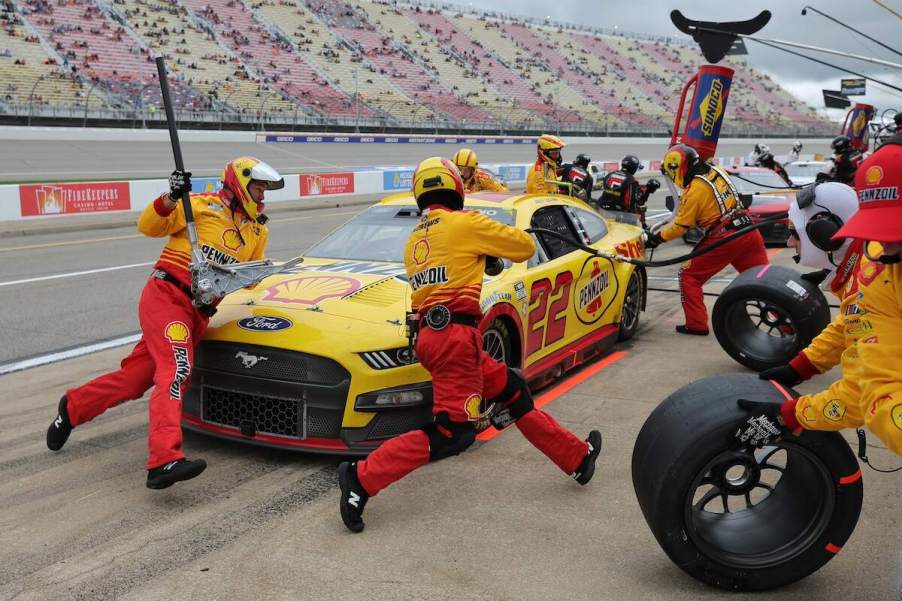
What Happens During a NASCAR Pit Stop?
The pit stop is a race within a race in motorsports. If you’ve watched NASCAR, you’ve seen the drama unfold after a car spins in turn one. When the yellow flag flies, indicating caution on the track, every car rushes to pit road, where the racing intensifies.
The history of pit crews and the pit stop

NASCAR says race teams didn’t generally need pit stops in the early years because the shorter 100-mile races didn’t require stops for fuel or tires. The exception came in the 1950s with the Southern 500, and the need to improve pit stop speed became apparent.
Early pit stops to change a single tire lasted nearly a minute using bumper jacks and four-way lug wrenches. Methods evolved through the 1950s as floor jacks and pneumatic impact wrenches replaced bumper jacks and four-ways.
The next increase in pit stop speed came in the 1960s when the Wood Brothers began choreographing crew members’ movements. They mapped out the steps required to complete a task and honed them precisely.
As the importance of faster pit stops grew, pit crew competitions encouraged innovation. One revolutionary pit stop advancement still in use today debuted at such a competition in 1970. Bobby Allison’s team won the pit crew competition at Rockingham Speedway by gluing the lug nuts to the spare wheel.
Technological advances like capless fuel fillers, lighter floor jacks, and faster impact wrenches came in the 1970s. However, pit crew members at this point included the same mechanics and engineers who worked on the car all week, and pit stop times hovered around 30 seconds.
Specialized pit crew member roles began appearing in the 1980s. Throughout the decade, teams used recorded pit stop footage to identify areas for improvement. By the mid-1990s, NASCAR pit crews, comprising professional athletes, regularly completed sub-20-second pit stops during race conditions.
What happens during a NASCAR pit stop?

During scheduled pit stops, the eight-person pit crew changes tires and fills the car with fuel. Depending on tire wear, they change only right- or left-side tires, but at times, all four tires need replacing for maximum traction. Occasionally, the car’s suspension requires adjustment, or a windshield tear-off is removed.
When pit stops go as planned, every team is relatively equal. However, an unexpected flat tire, poorly handling suspension, or damage due to a collision requires pit crews to rise above planned pit stop expectations. Though extensive repairs require a trip to the infield garage, pit crews are well-versed in repairing various auto parts during a pit stop. Every second saved on pit road can add points to the team’s bid for the NASCAR Championship.
How long does a NASCAR pit stop take?
Fantasy Racing Cheat Sheet (FRCS) tracks the total seconds spent on pit road and the time in the pit box. Though Christopher Bell, driving the No. 20 Toyota, averaged the fastest time on pit road with 33.997 seconds per stop, the team averaged 11.085 seconds in the pit box. Conversely, Ryan Blaney, in the No. 12 Ford, took an average of 36.510 seconds on pit road, but the crew needed only 10.298 seconds in the box.
According to FRCS, most pit crews averaged pit stops in the 10-to-11-second range. However, since the introduction of NASCAR’s newest-generation wheels with one center lug instead of five lug nuts, pit stop record times have fallen.
Record book–worthy pit stop entries require complete four-tire stops. On July 30, 2023, the Joe Gibbs Racing team clocked a 9.764-second four-tire stop, setting a new record. Then, on Sept. 10, 2023, Chase Briscoe’s pit crew completed it in 8.45 seconds, beating the month-old record by over a second.






